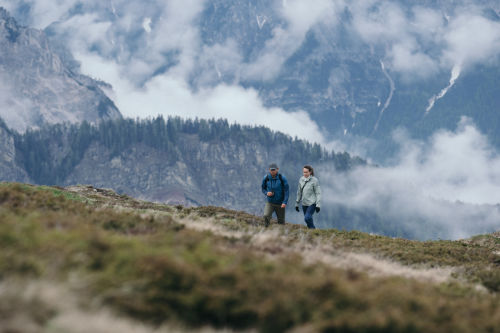It’s a cloudy day today, with some rain back over the hills of Mtirala National Park on Georgia’s Black Sea coast. Our spotting scopes are mostly trained on the next ridge where about 500 Black Kites are milling about. Gradually their numbers increase with more birds from the North, and they start to circle together, gaining height. It’s like watching a swarm of mosquitos as they swirl mesmerizingly around and around.

Over one million raptors pass through the Batumi area every year in the fall, making it one of the four largest raptor migration sites in the world (the others being Veracruz in Mexico [1] , Kèköldi in Costa Rica [2], and Eilat in Israel [3]), each of which record more than a million raptors in a season. The birds of prey passing through the area are migrating from breeding grounds in Siberia and Northern Europe to wintering grounds in Africa. Passing through the narrow isthmus between the Black and Caspian Seas, the Caucasus Mountains create a natural ‘bottleneck’, funneling the birds down along the Black Sea Coast towards the Red Sea and onward to Africa.
About 500.000 Honey Buzzards (Pernis apivorus) and 200.000 Black Kites (Milvus migrans) pass through the area. European Honey Buzzards are typically secretive and hard to find on their breeding grounds, making estimating their population size notoriously difficult. In contrast, when migrating, adults will typically congregate on and use specific, learned routes thus allowing them to be monitored more efficiently. The result is that the Batumi Raptor Count (BRC) records more Honey Buzzards in a season than the entire world population was thought to have been when the project started [4]. Recent research by BRC scientists has suggested that Honey Buzzards pick up migration routes from more experienced birds in a social learning setting, with this thought to be one of the most important drivers behind their flocking when on migration [5].

The Batumi Bottleneck also appears to be the world’s most significant location for observing harriers on migration, with about 7.000 Marsh Harriers (Circus aeruginosus), 6.000 Montagu’s Harriers (Circus pygargus) and 1.700 Pallid Harriers (Circus macrourus) being seen by the BRC annually. Besides the significant numbers of eagles, sparrowhawks and falcons also recorded, there are great waves of other non-raptor species too; on just one day in early September 2019, we had almost 600 European Rollers (Coracias garrullus) and many hundreds of European Bee-eaters (Merops apiaster) grace the skies over the counting stations.


















